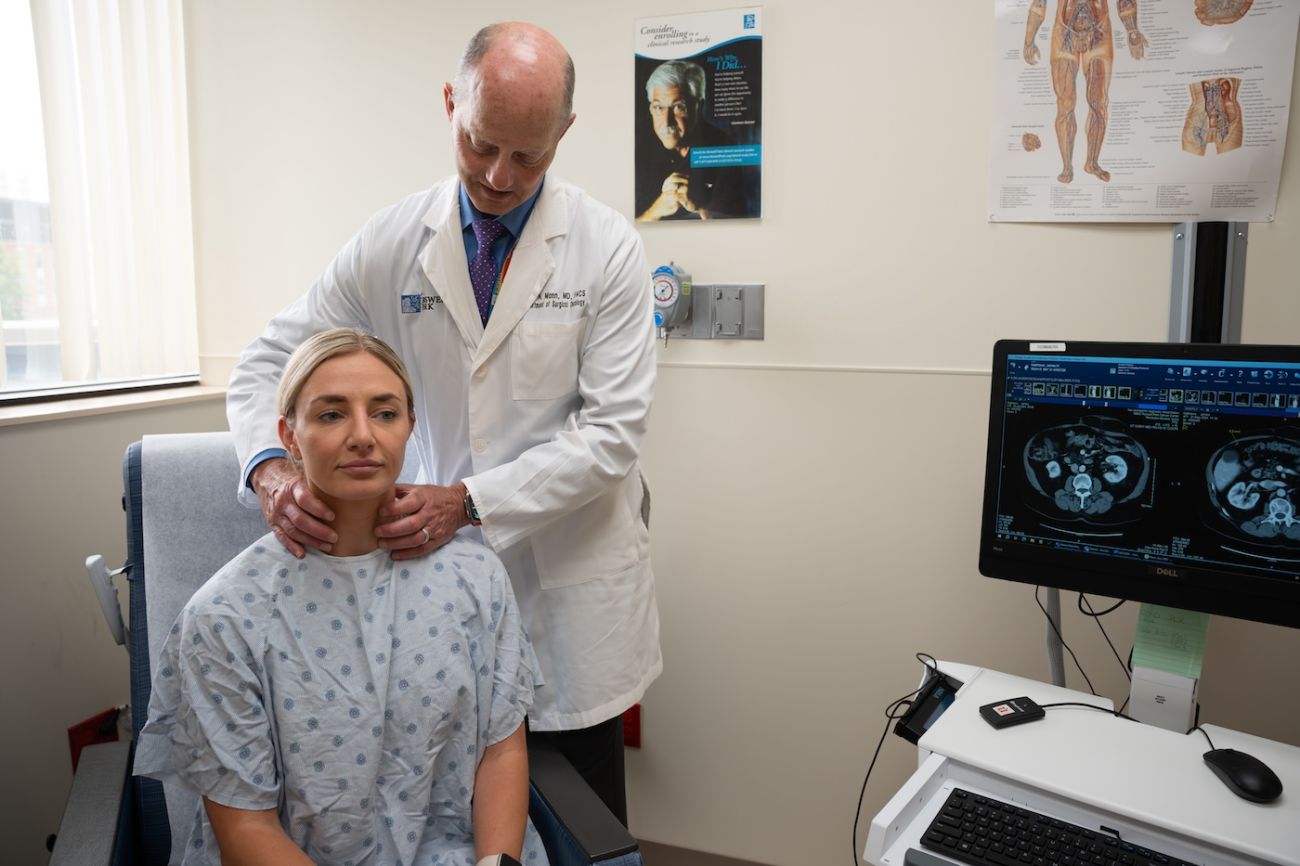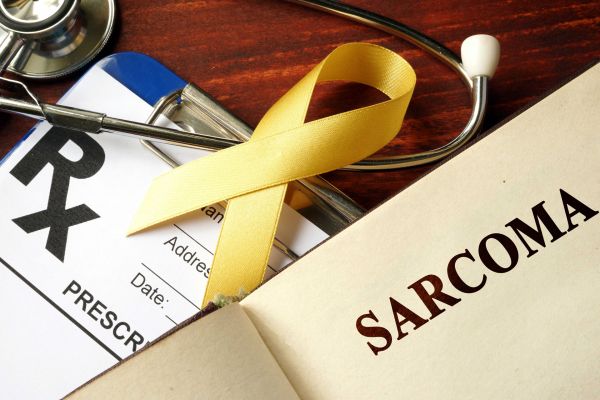Finding a lump or bump on any part of your body can be alarming. While the majority of these are harmless, it is always good to know when to seek medical attention.
The most common lumps and bumps that appear in soft tissues are lipomas. Made of fat cells, lipomas rarely change in size, are easy to move around and are not cancer. But, what does a lump or bump look like when it is cancer, particularly sarcoma, an aggressive kind of cancer that can spread and metastasize quickly?
A soft tissue sarcoma lump on the outside of the body can appear suddenly as a rounded mass beneath the skin, usually on your arm, leg, chest, or torso. It can be soft or firm and grows noticeably bigger in weeks and months after it is first discovered. Soft tissue sarcomas originate in the flexible, elastic soft tissues and deep spaces in the body, such as fat, muscle, nerves, fibrous tissues, blood vessels or deep skin tissues. Although less common, sarcomas can also begin in the bones or cartilage.
Soft tissue sarcomas are extremely rare with about 14,000 new in the United States each year. Men are diagnosed slightly more frequently than women and African Americans have the highest incidence of soft tissue sarcoma. In addition to their rarity, sarcomas have about 100 distinct types, which makes their management by a highly specialized and experienced team important to obtain the best outcomes.
“Sarcomas are very rare. Most occur sporadically without a known cause, but there are some known associations,” explains sarcoma expert and surgeon Gary N. Mann, MD, FACS, Professor of Oncology at Roswell Park Comprehensive Cancer Center.
“A small subset of diagnoses is attributed to genetics. Undergoing therapeutic radiation, such as for breast cancer, is actually a risk factor, and chemical exposure to herbicides and pesticides is also known to be associated with sarcoma.”
When a lump or bump needs medical attention
Cancerous lumps and bumps that develop on the outside of your body can be large, hard, and painless to touch; and they cannot be moved around easily. A sarcoma lump may seem harmless at first. Because it is painless and there are usually no other early symptoms, it can be easy to dismiss.
The location of the mass will determine how a patient perceives it, explains Dr. Mann. “A sarcoma deep in the thigh may be thought of as swelling. A mass in the back of the abdomen, may grow to be a huge size before the patient realizes that it's not just weight gain or that their pants are getting tighter. If the sarcoma mass is more superficial, just beneath the skin, you will notice it sooner, and there may even be skin changes.
“Anything that is continuing to grow at a reasonable rate needs to be evaluated. If you didn’t have this bump on your thigh four months ago and now you’ve got something the size of a golf ball there, which is about five centimeters, the likelihood that it might be a sarcoma starts to go up.”
Why Roswell Park for sarcoma?
Our multidisciplinary cancer care integrates the expertise of sarcoma-focused surgical, medical and radiation oncologists, plus plastic & reconstructive surgeons and more!
An internal sarcoma does not usually produce symptoms in the initial stages, until it grows to a substantial size or impinges on surrounding organs. In the abdomen or lungs, however, it can cause nausea and vomiting, constipation, cough or shortness of breath. Pain is usually a later symptom, if it begins to press on nearby organs, nerves, muscles or blood vessels.
Dr. Mann adds that no matter where sarcoma develops in the body — in your arm, leg, abdomen, chest or spine — it is still considered a sarcoma cancer, and is different from breast, lung and other kinds of cancer.
“What’s really important is finding a sarcoma medical team that understands sarcoma and how it behaves, and more importantly, how it's treated."
Getting an accurate and timely diagnosis
A soft tissue sarcoma lump may often be mistaken by medical practitioners for a hematoma (bad bruise), abscess (inflamed bump), pulled muscle, lipoma or something else that is benign. Sarcoma in general can be difficult to diagnose, and X-rays or a standard ultrasound does not provide a definitive diagnosis.
“The average time from when a patient notices a lump and actually making the diagnosis of sarcoma is about six months. Sarcomas are rare, and you are not going to be able to tell if it’s benign or malignant with a physical exam," says Dr. Mann. "Because of this many medical practitioners don't put sarcoma on the list of possibilities.”
Dr. Mann advises seeking CT and/or MRI imaging, followed by a radiologist-guided needle biopsy and other radiological tests to determine its makeup and size. Optimal treatment should be tailored to the kind of sarcoma, its location in the body, its potential for metastasis and the individual patient.
“Sarcomas tend to spread to the lungs over other places. With a newly diagnosed sarcoma, we always check to see if it has already spread to the lungs,” says Dr. Mann.
Because sarcoma is different, standard treatments — such as chemotherapy, radiation and surgery — may be altered. The chemotherapy drugs, type and timing of radiation, and most especially the surgery is very specific to the sarcoma type, how advanced it is, and the patient who has the sarcoma. Evaluation and care at a sarcoma center, like Roswell Park, with a multidisciplinary team of oncologic surgeons and radiation oncologists who specialize in the diagnosis and treatment of sarcoma tumors is essential.
“We are a true sarcoma center. We have clinical trials open for various forms of sarcoma, intraoperative radiation capability, and regional chemotherapy approaches to deliver treatment right to where it needs to go. These specialized treatments, and their sequencing, help to avoid amputation, and give patients their best chance for a cure.”




